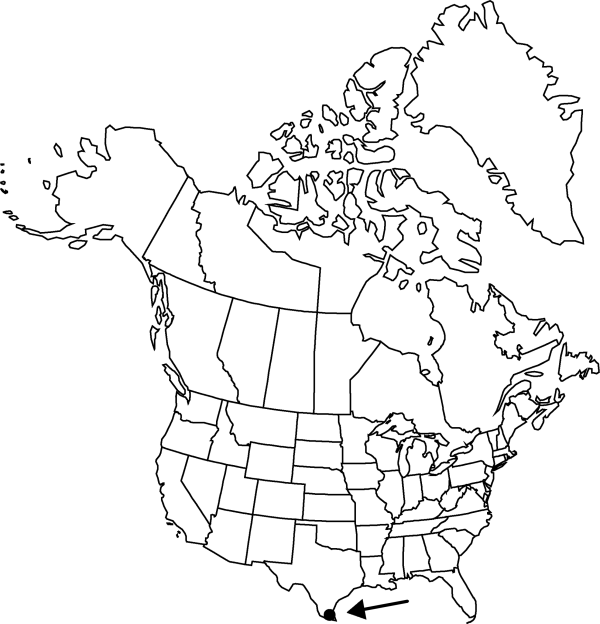Iresine palmeri
J. Wash. Acad. Sci. 5: 395. 1915.
Common names: Palmer’s bloodleaf
Basionym: Hebanthe palmeri S. Watson Proc. Amer. Acad. Arts 18: 144. 1883
Shrubs or vines, at least 3 dm. Stems sometimes scandent or decumbent, woody nearly throughout, scabrous. Leaves opposite; blade lanceolate, narrowly ovate, or lance-oblong, 12–60 × 5–17 cm, glabrous. Inflorescences: pistillate plants with panicles 2.5–6 cm; bracts and bracteoles ± equaling tepals; staminate plants not seen. Flowers: tepals green, oval, 1–1.4 mm, herbaceous, apex obtuse, pilose. Utricles exserted, subglobose, 1.7 mm, apex truncate. Seeds 1 mm.
Phenology: Flowering spring.
Habitat: Palm woods
Elevation: 0-10 m
Discussion
Selected References
None.
Lower Taxa
None.
... more about "Iresine palmeri"
dehiscence +
truncate +
pilose +
obtuse +
glabrous +
membranous +
membranous +
Palmer’s bloodleaf +
peripheral +
alternating +
connate +
hypogynous +
unisexual +
cluster +
diffuse +
arranged +
petiolate +
opposite +
superior +
surrounding +
absent +
J. Wash. Acad. Sci. +
1915 +
lenticular +
1 cm10 mm <br />0.01 m <br /> (?) +
scabrous +
woody +
capitate +
2;3 +
slender +
absent +
Iresine palmeri +
Iresine +
species +
1-3-veined +
green +
herbaceous +
absent +
oval +
equaling +
simple +
dehiscing +
exserted +
subglobose +
1.7 cm17 mm <br />0.017 m <br /> (?) +
membranous +
staminate;pistillate +
